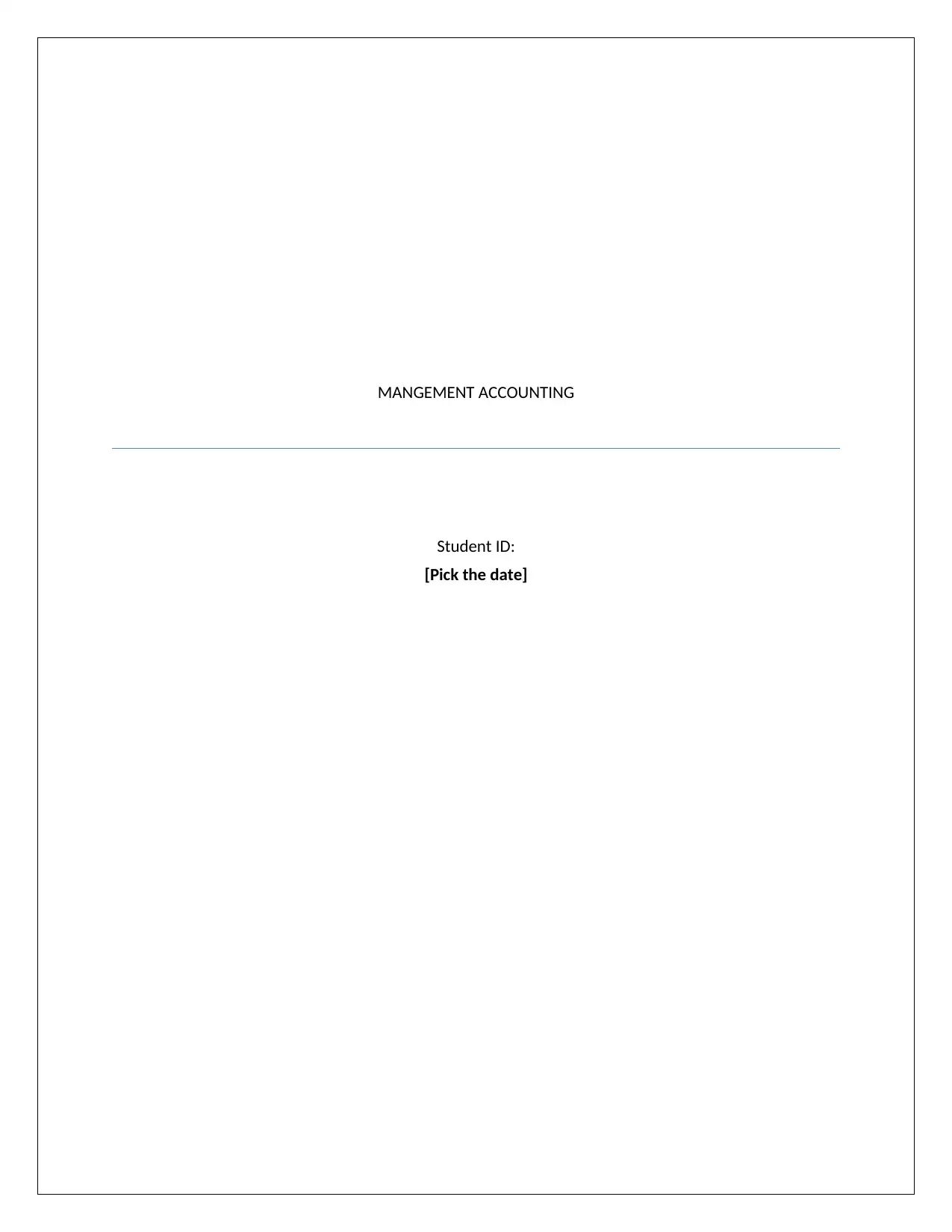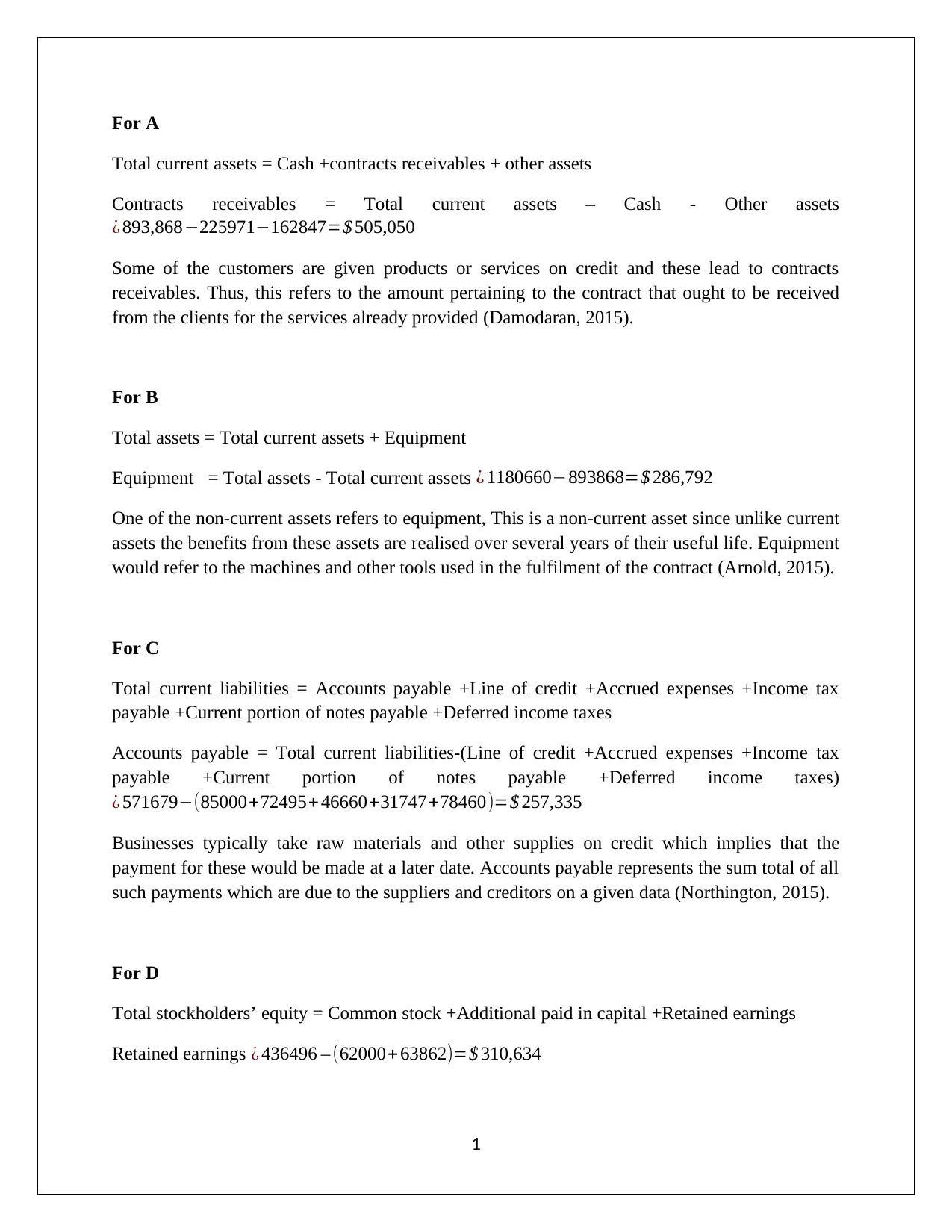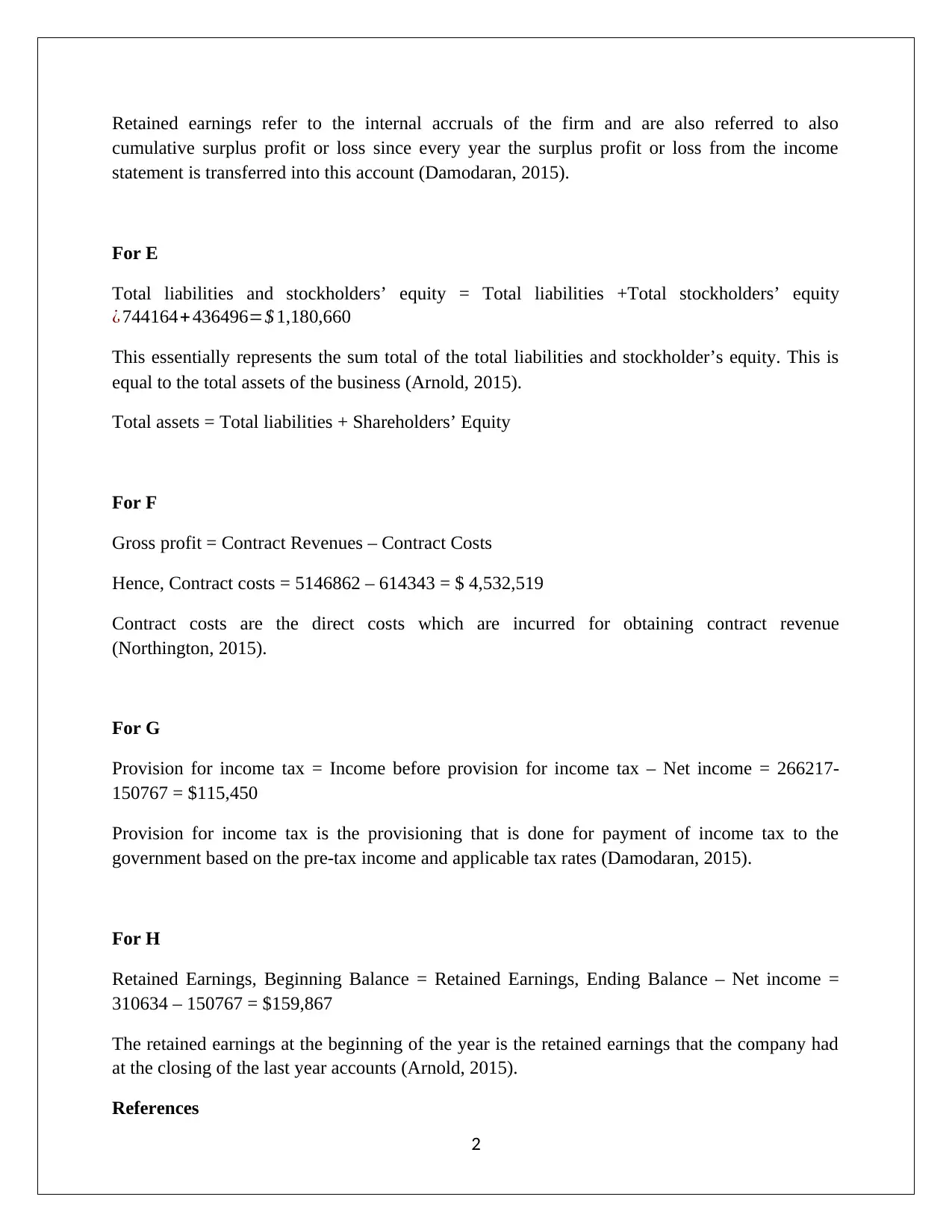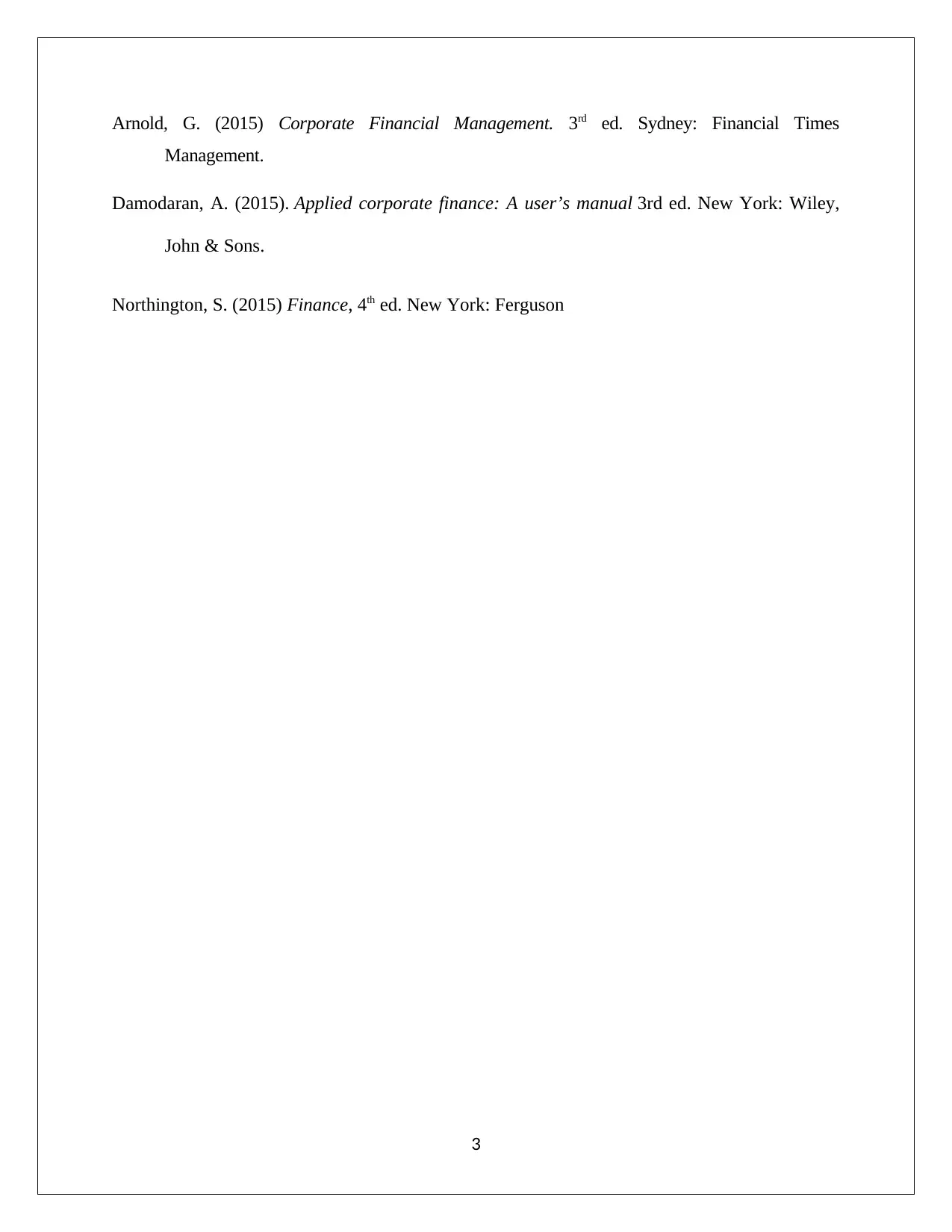Management Accounting: Financial Calculations and Explanations
VerifiedAdded on 2023/06/07
|4
|620
|267
Homework Assignment
AI Summary
This assignment solution provides detailed calculations and explanations for various financial metrics in management accounting. It covers the calculation of contracts receivables, total assets, accounts payable, stockholders' equity, gross profit, and retained earnings. The solution breaks down each calculation step-by-step, offering insights into the underlying financial concepts and their practical application. The document includes calculations related to total current assets, equipment, total current liabilities, and the provision for income tax, along with relevant references to financial management texts. This assignment is designed to help students understand and apply core accounting principles to solve practical financial problems.
1 out of 4











![[object Object]](/_next/static/media/star-bottom.7253800d.svg)